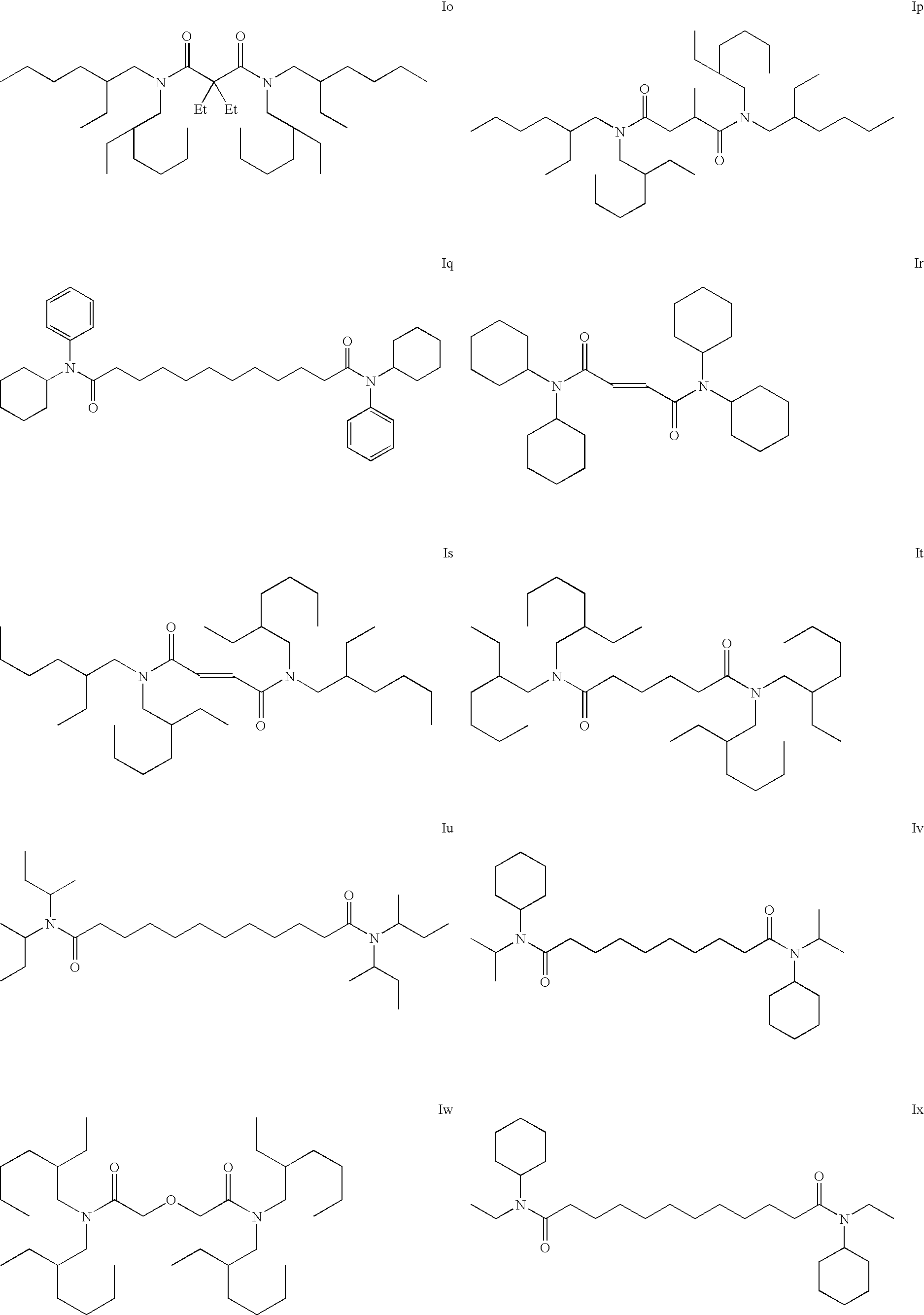Photographic element with dye-forming coupler and image dye stabilizing coupler solvent
a dye stabilizing coupler and photographic element technology, applied in multicolor photographic processing, photosensitive materials, instruments, etc., can solve the problems of chromogenic development chromogenic development performance often not meeting performance expectations, deterioration of original recorded images, and only modest amount of dye stabilization to light fade, etc., to achieve satisfactory color and tonal balance, improve light stability, and balanced density loss rate
- Summary
- Abstract
- Description
- Claims
- Application Information
AI Technical Summary
Benefits of technology
Problems solved by technology
Method used
Image
Examples
synthesis examples
Iu: Triethylamine (7.95 g; 78.5 mmol) and di-sec-butylamine (9.9 g; 76.7 mmol) were dissolved in THF (300 mL) and cooled in an ice bath. Dodecanedioyl dichloride (10 g; 37.4 mmol) dissolved in THF (100 mL) was added drop wise and the heterogeneous mixture was allowed to warm to room temperature and stir over night. The white salts were removed by filtration and the salts washed with THF. Most of the THF was removed from the filtrate under vacuum and the resulting solution was poured into 1.8L of dilute HCl / ice water. The solution was extracted with dichloromethane (2×'s) and the combined organic layers were dried (Na2SO4). Solvent removal under vacuum afforded 16.9 g of a pale yellow oil. Chromatography on silica gel with 96:4; dichloromethane:acetone afforded 10.5 g (62%) of the desired material (Iu) as a very pale yellow oil. MS, m / e=453 (P+1) in ES+ mode.
Inn: Triethylamine (39.8 g; 393 mmol) and 4-benzylpiperidine (67.24 g; 384 mmol) were dissolved in THF (1L) and stirred at room...
example 1
Photographic Example 1
To demonstrate the effect of branching in amide substituent groups for compounds in accordance with Formula I, coupler dispersion and coatings were made as described above for comparison solvent Ca (comprising straight chain (n-propyl) groups) and solvents In (comprising branched (isopropyl) groups) and Ioo (comprising joined ring groups) in accordance with Formula I, as well as for comparison solvent Ce (comprising straight chain (n-butyl) groups) and solvents Iu (comprising branched (sec-butyl) groups) and Ix (comprising cyclic ring groups). In each case the comparison and corresponding invention examples employed solvents comprising the same number of carbon atoms. The results are reported in Table 1.
TABLE 13 week HIDCoupler solvents% loss from D = 1Ca (straight chain)60.1%In22.5%Ioo26.9%Ce (straight chain)57.9%Iu25.2%Ix 17%
Use of compounds in accordance with the invention provided a significant advantage over the comparisons.
example 2
Photographic Example 2
To demonstrate the light stabilizing effect of compounds in accordance with Formula I relative to a conventional prior art coupler solvent, another set of coupler dispersions and coatings were made as described above for comparison solvent Cb (tributylcitrate) and solvents Ib, Ic, Ie, If, and Ij in accordance with Formula I. The results are reported in Table 2.
TABLE 23 week HIDCoupler solvents% loss from D = 1Cb (TBC)52%Ib21%Ic22%Ie22%If16%Ij12%
As in Example 1, use of compounds of Formula I in accordance with the invention showed greatly improved light stability relative to use of the comparison solvent.
PUM
| Property | Measurement | Unit |
|---|---|---|
| molar ratio | aaaaa | aaaaa |
| stability | aaaaa | aaaaa |
| color | aaaaa | aaaaa |
Abstract
Description
Claims
Application Information
 Login to View More
Login to View More - R&D
- Intellectual Property
- Life Sciences
- Materials
- Tech Scout
- Unparalleled Data Quality
- Higher Quality Content
- 60% Fewer Hallucinations
Browse by: Latest US Patents, China's latest patents, Technical Efficacy Thesaurus, Application Domain, Technology Topic, Popular Technical Reports.
© 2025 PatSnap. All rights reserved.Legal|Privacy policy|Modern Slavery Act Transparency Statement|Sitemap|About US| Contact US: help@patsnap.com



